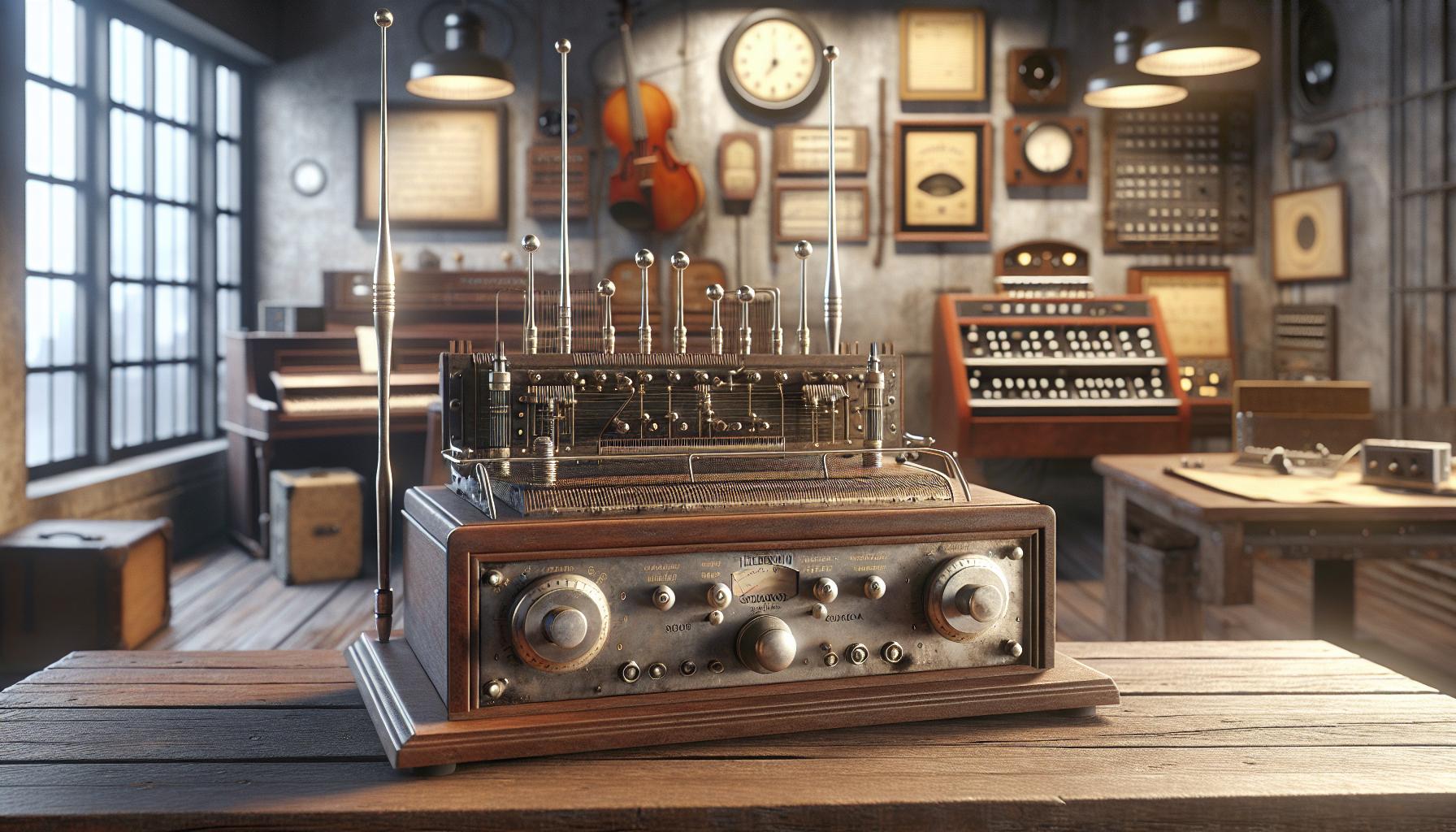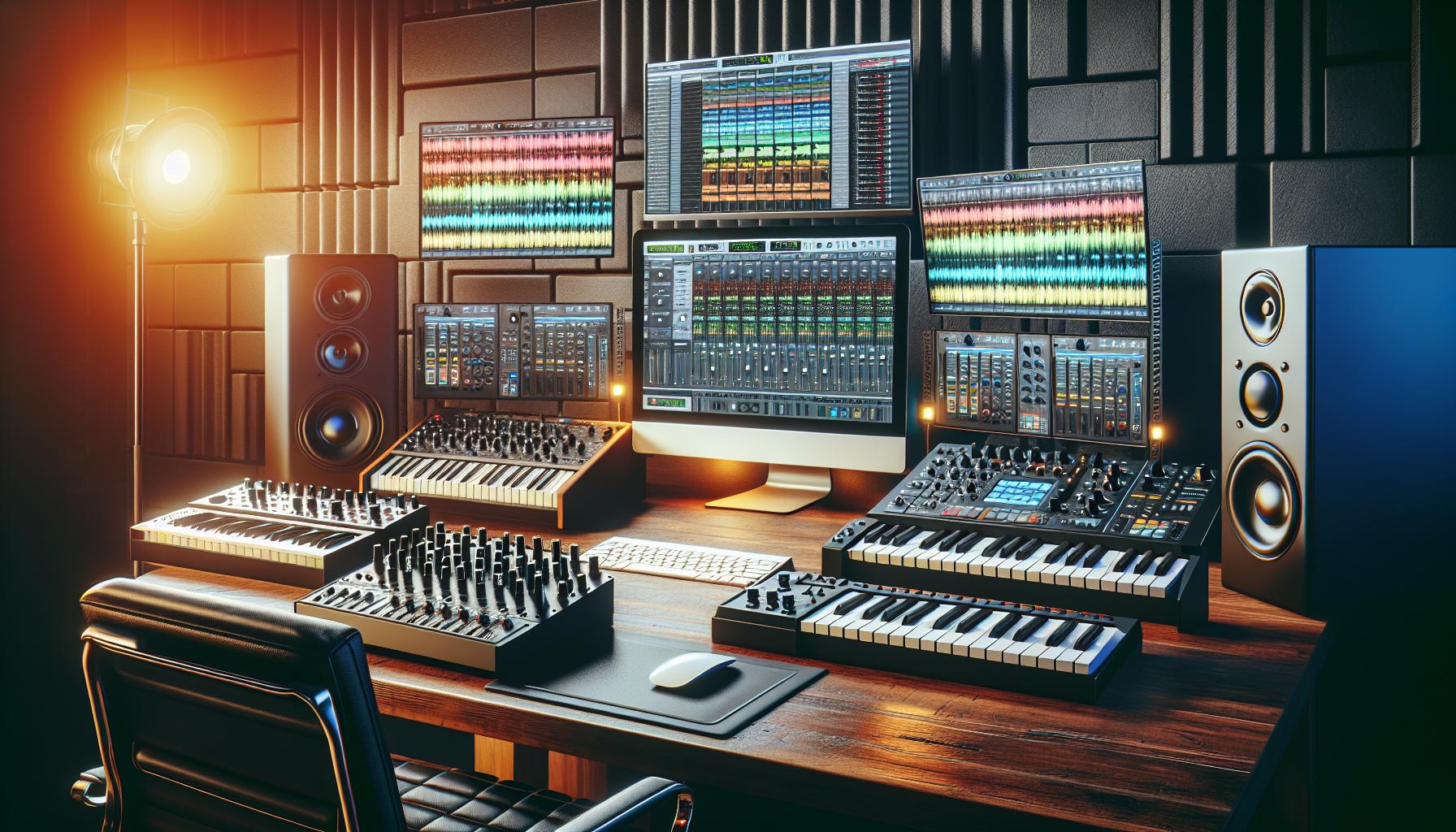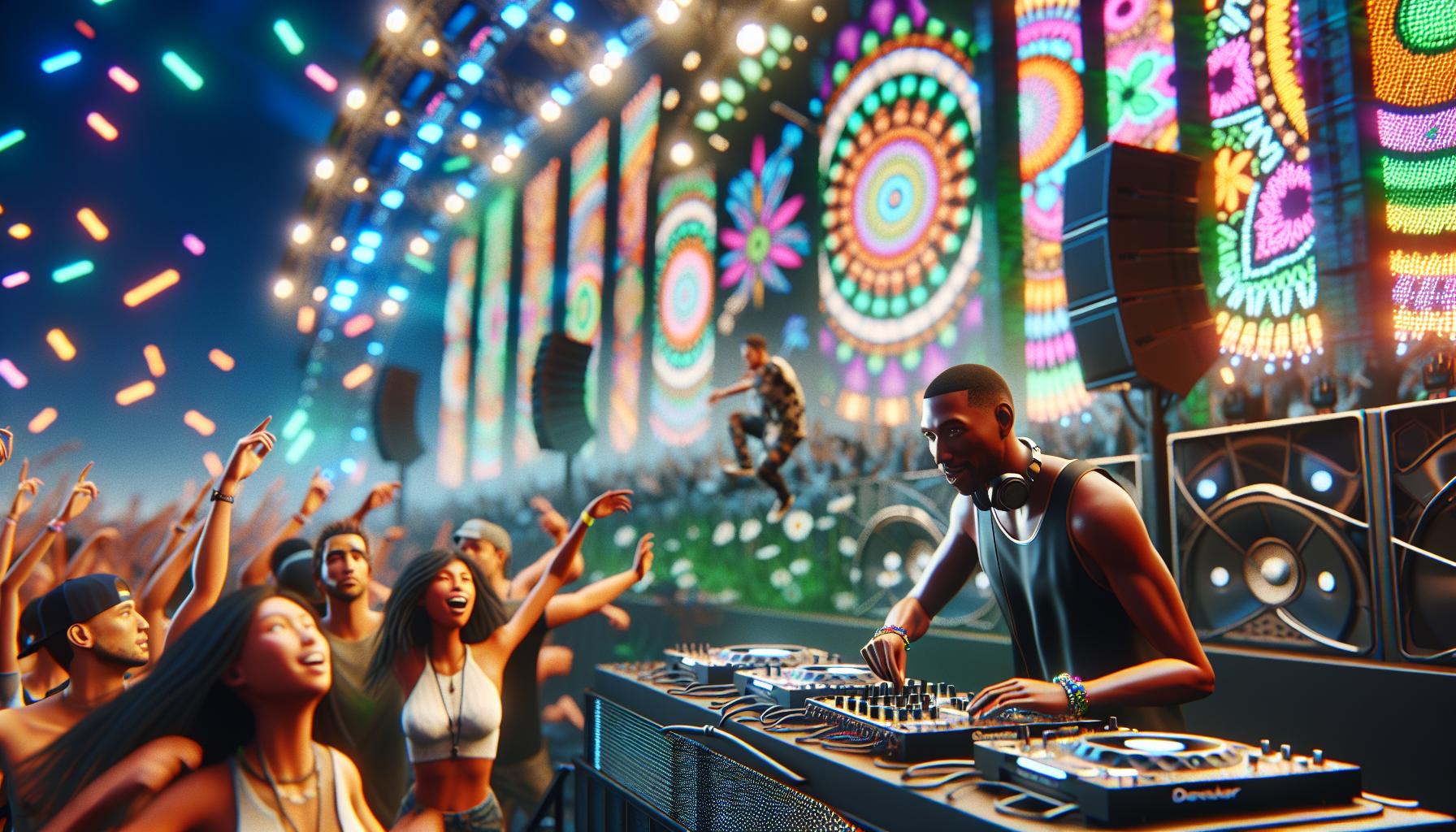Electronic music has transformed the soundscape of modern music, reshaping genres and influencing countless artists. From its experimental roots in the early 20th century to the pulsating beats of today’s dance floors, this genre reflects technological innovation and cultural evolution. It’s a journey that showcases the fusion of creativity and machinery, captivating listeners across generations.
As synthesizers and computers became accessible, musicians began exploring new sonic territories, pushing boundaries and challenging traditional norms. This article delves into the rich tapestry of electronic music history, highlighting key milestones and iconic figures who paved the way for the vibrant scene we know today. Whether you’re a seasoned enthusiast or a curious newcomer, understanding this evolution offers a fascinating glimpse into the heartbeat of contemporary music culture.
Key Takeaways
- Historical Roots: Electronic music originated in the early 20th century, driven by pioneers like Luigi Russolo and Leon Theremin, who explored new soundscapes and manipulated audio.
- Innovative Instruments: Key instruments like the Theremin, synthesizers, drum machines, and samplers have significantly influenced the genre and expanded creative possibilities for musicians.
- Genre Development: The late 20th century saw the emergence of influential electronic genres such as techno, house, and synth-pop, which transformed popular music and laid the foundation for today’s EDM scene.
- Technological Advancements: The transition from analog to digital technology, alongside the rise of software and DAWs, has revolutionized music production, allowing for more intricate sound design and easier access for artists.
- Cultural Influence: Electronic music transcends traditional genres and fosters community through cultural events like festivals, uniting fans and artists while reflecting societal shifts.
- Contemporary Trends: Current trends include the rise of subgenres like dubstep and future bass, the integration of AI and VR in music production, and an emphasis on sustainability within the electronic music community.
Electronic Music History
Electronic music traces its roots to early 20th-century innovations. Pioneers experimented with sound, laying the groundwork for what would become a transformative genre.
Early Innovations
Early innovations in electronic music emerged from the intersection of science and art. Italian composer Luigi Russolo created the “Intonarumori” in 1913, an instrument designed to produce noise and explore new soundscapes. In the 1920s, American engineer Leon Theremin introduced the Theremin, an electronic device played without physical contact, allowing musicians to manipulate pitch and volume through hand movements. The rise of tape music in the 1940s by composers like Pierre Schaeffer and Karlheinz Stockhausen further advanced electronic techniques through sound manipulation and collage, shaping the future of music composition.
Key Instruments Developed
Key instruments played a crucial role in electronic music’s evolution.
- Theremin: Operated by moving hands near two antennas; it became a symbol of early electronic sounds in music.
- Synthesizer: Developed in the 1960s, synthesizers allowed musicians to create a wide range of sounds; notable models include the Moog and ARP 2600.
- Drum Machines: Introduced in the late 1970s, these devices revolutionized rhythm creation; the Roland TR-808 gained iconic status in hip-hop and electronic music.
- Sampler: Emerging in the 1980s, samplers enabled artists to manipulate pre-recorded sounds, expanding sonic possibilities for music production.
These instruments shaped the soundscapes of various genres, solidifying electronic music’s place in contemporary culture.
The Rise of Electronic Music in the 20th Century

The 20th century marked a significant turning point in the evolution of electronic music. Pioneers and technological advancements reshaped musical landscapes, leading to the emergence of diverse genres.
Pioneering Artists and Their Contributions
Italian composer Luigi Russolo’s “Intonarumori” set the stage for noise exploration in the early 20th century. American engineer Leon Theremin introduced the Theremin in the 1920s, allowing musicians to control sound through hand movements. In the 1940s, Pierre Schaeffer developed tape music, utilizing sound manipulation techniques that influenced artists like Karlheinz Stockhausen. These artists challenged conventional musical norms and expanded the definitions of music. The contributions of Brian Eno in the 1970s introduced ambient music, emphasizing texture over traditional melody. Artists such as Kraftwerk revolutionized electronic music in the 1970s with their use of synthesizers, presenting influential sounds that blended pop aesthetics with technological innovation.
Major Genres Emergence
The emergence of electronic music genres in the latter half of the 20th century transformed popular music. Genres such as techno, house, and synth-pop gained traction in the 1980s, driven by artists like Derrick May and Frankie Knuckles. Techno originated in Detroit, blending elements of disco and funk, while house music emerged from Chicago’s nightlife, characterized by its repetitive beats. The British synth-pop movement, led by groups like Depeche Mode and New Order, popularized electronic sounds in mainstream music. The development of these genres paved the way for contemporary electronic dance music (EDM) and further diversified the musical landscape, influencing various modern styles and subcultures.
The Evolution of Electronic Music Technology

The evolution of electronic music technology highlights significant advancements that shaped the genre. Technological innovations transformed sound creation and manipulation, enhancing the artistic possibilities in music production.
Analog to Digital Transition
The transition from analog to digital technology marked a pivotal shift in electronic music production. Analog synthesizers relied on voltage control and physical components to create sound, while digital synthesizers utilized computer algorithms to produce and manipulate audio. The introduction of the MIDI (Musical Instrument Digital Interface) protocol in the early 1980s revolutionized how instruments communicated, allowing diverse devices to connect and sync. This transition facilitated the emergence of digital audio workstations (DAWs), enabling musicians to record, edit, and produce music more efficiently than ever. Instruments like the Yamaha DX7 and Roland D-50 exemplified this shift, expanding creative possibilities and leading to the rise of digital genres.
Influence of Computers and Software
Computers and software played a critical role in shaping modern electronic music. As processing power increased, musicians gained access to sophisticated music production tools such as Logic Pro, Ableton Live, and Pro Tools. These platforms offered unprecedented flexibility and capabilities, allowing for complex arrangements and intricate sound design. Sampling technology allowed artists to incorporate various sound elements, further diversifying genres and styles. Software synthesizers, like Serum and Massive, became staples in music production, enticing artists with their versatility. The proliferation of music production software democratized access, enabling emerging artists to create high-quality recordings from home studios, profoundly impacting the industry landscape.
Global Impact of Electronic Music

Electronic music has profoundly influenced global culture, shaping various artistic expressions and fostering communities around the world. Its reach spans multiple genres, encouraging collaboration and innovation across geographical and cultural boundaries.
Cultural Significance
Cultural significance of electronic music lies in its ability to transcend traditional musical frameworks. Artists integrate diverse influences, from classic rock to hip-hop, creating unique hybrids that resonate with wide audiences. Genres like house and techno reflect urban experiences, serving as soundtracks for social movements and nightlife culture. Electronic music’s incorporation in film, advertising, and video games illustrates its versatility and mainstream appeal. The genre often addresses themes of technology and futurism, reflecting societal shifts and connecting listeners through shared experiences.
Electronic Music Festivals and Community
Electronic music festivals have become vital cultural events, uniting fans and artists in immersive environments. Iconic festivals, such as Tomorrowland, Ultra Music Festival, and Coachella, attract hundreds of thousands of attendees each year, fostering a sense of community. These gatherings showcase emerging and established artists, creating platforms for collaboration and networking. Festival culture emphasizes inclusivity, promoting acceptance and diversity among attendees. Additionally, local electronic music events nurture grassroots communities, providing spaces for talent development and cultural exchange. Such events strengthen bonds within the scene, driving the evolution of electronic music worldwide.
Contemporary Trends in Electronic Music
Contemporary electronic music continually evolves, reflecting innovations in technology and shifting cultural landscapes. Several subgenres dominate today, while future directions promise exciting advancements.
Popular Subgenres Today
- House Music: Rooted in Chicago’s nightlife, house music remains a staple of electronic dance culture. Subgenres like deep house and tech house emphasize smooth textures and intricate rhythms, resonating with audiences globally.
- Techno: Originating in Detroit, techno emphasizes repetitive beats and synthesized sounds, often featuring darker undertones. Its various styles, such as minimal techno and industrial techno, cater to diverse listener preferences.
- Dubstep: Known for its heavy bass and rhythmic syncopation, dubstep emerged from the UK garage scene. Dubstep artists commonly use wobbly basslines and heavy drops to create dynamic listening experiences.
- Trance: Characterized by melodic hooks and uplifting soundscapes, trance focuses on emotional resonance, making it popular in festival settings. Subgenres like progressive trance and psytrance have gained traction, attracting dedicated fan bases.
- Future Bass: Combining elements of trap and melodic influences, future bass features rich chords and vibrant melodies. Its use of vocal chops and atmospheric synths appeals to a younger audience, driving its popularity.
- Artificial Intelligence (AI): AI technology increasingly influences music production, enabling automated composition and sound design. As software evolves, AI algorithms facilitate innovative approaches to music creation, expanding artistic possibilities.
- Virtual Reality (VR): VR technologies are reshaping live performances, providing immersive experiences for audiences. Virtual concerts and interactive installations enable deeper engagement, blending music with visual environments.
- Cross-Genre Collaborations: Artists are increasingly blending electronic music with genres such as hip-hop, rock, and pop. These collaborations create unique hybrids that appeal to a broader audience and challenge traditional genre boundaries.
- Sustainable Practices: As environmental concerns grow, the electronic music industry increasingly focuses on sustainability. Eco-friendly festivals and green practices in production aim to reduce waste and promote awareness within communities.
- Global Influences: Electronic music continues to integrate cultural elements from around the world. Genres like reggaeton and Afrobeat are merging with electronic styles, creating new sounds that reflect diverse musical traditions.
Electronic Music’s Journey
Electronic music’s journey reflects a remarkable transformation that continues to shape the musical landscape. From its experimental roots to the vibrant genres of today, it showcases the power of technology and creativity. The genre’s ability to adapt and evolve demonstrates its relevance in contemporary culture.
As new innovations emerge and artists push boundaries, electronic music will undoubtedly keep influencing various artistic expressions. Festivals and communities foster connections among fans and creators, ensuring the genre remains a dynamic force. The future of electronic music holds exciting possibilities, inviting listeners to explore its rich tapestry of sounds and experiences.